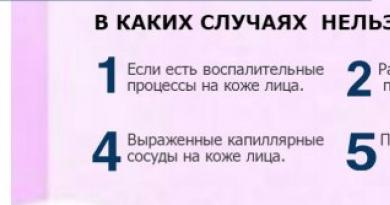In the modern virtual world there is an incredibly large number of the most various games, which are divided into certain groups by gender, age and general groups for entertainment, development of certain qualities, as well as educational ones. Educational games are very popular, since they offer the opportunity to master certain knowledge, or test their own level of mastery of any knowledge in game form, which eliminates the possibility of getting bored during exercise.
Nullable and one-time tables:: Could this get any easier?
Of course, you'll need to remember some of them, but these tips will help you keep them to a minimum. Tables in one go are almost as easy. Any number multiplied by one is always itself. “Yes,” you say?
Two time tables: double your fun
When you multiply a number by two, you simply double that number. This is pretty simple math, even for us with the largest numbers.Five Time Tables:: This is why you have fingers
It's not as confusing as it might seem. When you multiply four by anything, you need to use doubling twice. First of all, can you count to five? Then you can find out your five tables. So, when you want to multiply a number by five, you simply count five seconds, which can be times.
Today we bring to your attention an exciting and very useful flash game for girls called Multiplication Table Game, where you can test how well you know the mathematical multiplication table, and also raise the level of your knowledge to a higher level. If you are currently studying multiplication at school, then this educational entertainment will help you become the best student in the class. the site wishes you success in a useful task - learning the multiplication tables!
Nine Time Tables - One Serious Handy Tip
If you have trouble tracking, just use your fingers. Here's a fun way to remember your nine-fold tables. For this method you will need two hands. Place your hands in front of you with your palms facing you. Your fingers represent the numbers one through ten. Now you are ready to make nine tables. Count the fourth finger and twist that finger. Now you have three fingers before this finger and 6 after it. Place the 8th finger so that you have seven fingers before the finger you curled underneath and two fingers after that.
Tips for passing:
As soon as this completely free entertainment loads on your monitor screens, select the level at which you will test your knowledge. Among the available levels you can choose: multiplication from 1 to 10, then from 11 to 20 and finally from 1 to 20. Now decide how well you have progressed in learning the multiplication table and choose the most suitable level for you.
Ten Minute Tables:: Just Add a Zero and Shuffle
If you're confused, look at the diagram at the top of this page on the right. If you want to multiply something by 10, just add a zero to the end. Try it with any number from one to a billion. The 2 times table is the basis for all teaching multiplication tables. Find practical and very specific advice from instructor John Lys to help you support your child with the 2x worksheet and find links to worksheets and games to make learning fun.
After the choice in favor of one of the proposed levels is made, a virtual school board will appear in front of you, on which you will see an example where there will be no answer after the equal sign, and in the lower part of the playing space you can choose the correct answer, in your opinion. and put it in place of the answer as an example. To do this, using a computer mouse, simply drag the required number into the example and place it after the “equals” sign. If your answer turns out to be correct, you will receive 1 point, but if suddenly the answer is incorrect, then 3 points will be deducted from your piggy bank. Thus, try to answer the questions correctly and accurately, while earning the maximum number of points.
Step One: Be Consistent with Your Pronunciation
The 2-fold table is the most important, and one of them is most likely to cause problems if children have learned to count in multipliers, as it is difficult to replace two-four-six-eight with a table that alternates between singles and twos. How do you tell a table 2 times? When you practice with your child, it is important to be consistent in how you read the number sequence out loud. Select “One two is two, two two is four, three twos is six, four twos is eight,” etc. or "Two of them is two, two of them is four, two of three is six, two quarters of eight" as a starting point.
In the lower right corner of the game space you will be able to see a button labeled Hint. By clicking on it, you will see a multiplication table in front of you, where you can find the correct answer, and then by clicking on the Back button, located in the same place in the lower right corner of the field, return to your example and select the correct answer. But, still, you should not abuse this in order to memorize all the examples.
What if the chip doesn't have a pair?
If your child is studying, time tables at school use the same form so they are less likely to mix the two up. Children often make mistakes by a factor of 3. Brain-to-brain connections develop slowly at first, and learning this chart creates a template for learning others.
Getting column blending is much more about the coordination of learning than the mathematics of learning. getting just a little better each time is not a problem if they take a little longer to learn than other kids you know. Once they can tell the table with coins, take them away and try it. Ask your child to write down what he or she just learned. Ask your child if 2 is an odd or even number.
Here is a free online game with multiplication tables. A mouse is enough to play. Choose pairs of chips with the same result. For example, 2x2 and 4. Or 6x6 and 36.
Rules of the game:
- Remove chips with the same result;
- Each level must be cleared within a certain time;
- The remaining time is shown by the indicator at the bottom;
- The higher the level, the less time is given;
- For removing the correct chips, a time bonus is given;
- You can play endlessly, the number of levels is unlimited.
If you forgot the multiplication table, you can press the button with a question mark and look at it. After this, the game will start again. Thus, if you want to score more points, play without tips!
Step Three: Select Elements from the Table
If they know, point out that each number in the even numbers table is even. If not, explain, then make the same point. If they get better right away, they praise them. If not, go back to the item in the table one or two before the error and ask them to say the table until they reach the error.
Step Four: Help Your Child Display the Numbers in the Columns
If necessary, return from one to five two. Always go back to a calculation that is known and build from there. This helps improve number understanding and prepares children for larger even number tables. During the most difficult times, ask questions about the table, so that even when you ask the question, you are making a little joke. The dead pan approach can be quite fun!
- We don’t guess - we think about it, figure it out and understand.
- Make sure your child expects or asks you questions.
Endless game or...
The game ends when the time allotted for the level runs out. Then a window appears with the number of points scored and levels achieved.
Who even came up with this idea - to make a game based on the Pythagorean table?
Once again playing Bejeweled, received as a gift from Origin, one programmer thought - what if we use the same or similar mechanism in an educational game. He tried it and liked it. After all, the principle remains the same - collect combinations.
Well, then why not find templates for the remaining tables? He could see the underlying structure and knew he was right. Roth memorization is passive and mechanical. Students are usually bored. Why not learn one template for the entire table? Pattern detection is active, creative and engaging. The essence of mathematics is patterns.
Learn to recognize patterns in early age develops analytical skills. They can remember and visualize the table better when they see the pattern. This is true for all children. My book uses left and right brain strategies to teach multiplication. There are significant differences between children who are left-brain dominant and those who are right-brain dominant. Whereas a left-brain dominant child can build a whole from parts, a right-dominant child prefers the big picture, seeing patterns and making connections.
Multiplication table combinations? Yes, you are laughing!
Not at all. Millions of people collect combinations of three chips in different games, and they are also happy. A in Pythagoras you need to collect combinations of just two chips. Click on one, click on the other. It doesn’t matter where they are located - the game does not impose any additional restrictions. It is only important that the value of the chips be the same.
Case studies
Children with special needs are often right-brain dominant. Learning multiplication tables is much easier when both hemispheres are involved. Parents and teachers are responsible for ensuring that children learn their times tables. Without them, a child will not advance beyond third grade math. Fractions, decimals, percentages, and algebra will not be accessible to children. In California, the number one reason students don't graduate from high school is failure to take algebra. Main reason: failure to master time tables!
The first levels are too easy, but I thought...
The first levels consist of only 4 chips or two pairs. This is done to quickly enter the game so that the brain can wake up and gradually work at full capacity. Every three levels the number of chips will increase until it fills the entire field.
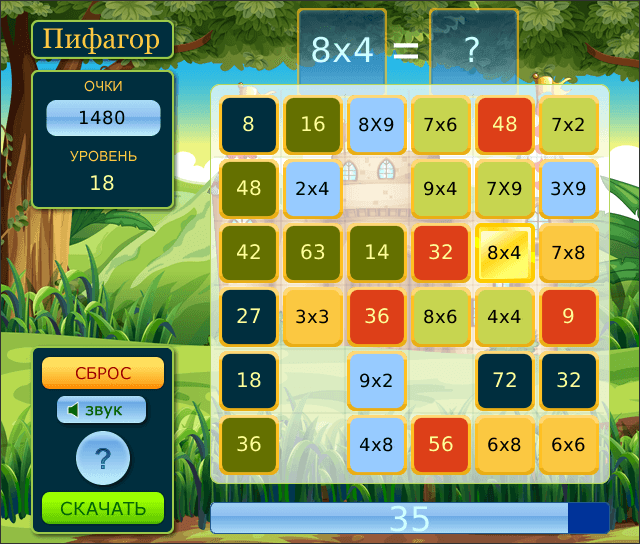
S. near the bottom of industrialized countries in math skills. We must reverse this alarming trend. Time to intervene in third grade. Teachers, why isn't a more effective approach to multiplication tables than "drill and destroy" novel memorization? Why not bring the “magic” of math to the classroom? If all third graders really loved math, they would be more likely to succeed in school.
Parents need to do their part too. Parents have a huge influence on the third grader. In high school it may be too late. Mastering multiplication tables is essential for your child's future. The purpose of this book is not only to master reproduction skills for all children, but also to instill in them a love of numbers and a passion for mathematics.
When the chips fill the entire field and you have 40 seconds left,
Let's see if you call it too easy?
In fact, the author did not try to complicate the game, because the multiplication table itself is not sugar. And if you are so cool, try to hold out until level fiftieth.
The difficulty stops increasing in the program after the chips fill the entire field. But it will increase in your brain - due to fatigue. Unless, of course, you are a genius calculator like the Soviet millionaire Koreiko.
Mathematics is sometimes the subject of what more work worth the children. Learning to add, multiply and divide is not always easy, and there are times when children have difficulty remembering multiplication facts. That's why we offer you a choice of five online games for your kids to explore while having fun.
Because a lot has been said about how important it is for children to have fun and learn at the same time, as is done on a platform that teaches math in a very innovative way. As with little ones, there are also games to stick to the rules or multiplication tables. Here we select a few.
What if the chip doesn't have a pair?
The game is made in such a way that chips always have pairs. She takes pieces of the multiplication table in the form 2x2 = 4, and then places the factors on one counter and the results on another. Thus, each level has a solution. But perhaps it’s just that you forgot something from the multiplication table. This is the test - do you remember this magic well?
Multiplication board games
In this game the little one has to go past screens that go up a level and have balls in them that they throw. As you progress and move from one multiplication table to another, the number of balls increases. In this fun game, the child must decide what the challenges are by choosing the animal that contains the correct answer. She will have a trumpet!
For this game we go to a car wash. In order for the car to come out clean, the child must solve the proposed multiplication operations. Bombombra has kidnapped Bomi! Very easy: answering multiplication questions. On this webpage, your child will be able to learn, practice and test their knowledge of the multiplication tables from 2 to 9 by choosing whether you want to test it "curature" or "sausage". Practice!
I liked the game, how can I thank the developer
Show this page to as many people as possible. :)
Strategies and Tips
Why is everything so bright, like in a kaleidoscope?
The world is already full of dull multiplication tables and colorless games with them. And most importantly, the colors have an additional function.
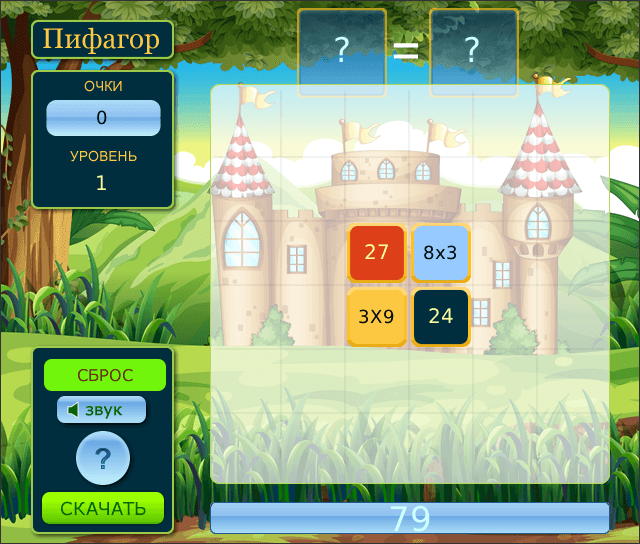
Screenshots of the program
Many children are reluctant to learn multiplication facts, and if you are a parent or teacher, you may feel like it is your responsibility to help them succeed. Eventually, you will need the ability to reproduce quickly as you progress in your education. You will need time, strategy and patience to help them in their conquest of the numbers, but you will find that with these tips you will enjoy the challenge.
If necessary, simply work with the combination for a few days until the child is completely dominant. Work with them gradually so that you realize that breeding is easy but continues at a steady pace to make progress. And don't be afraid to push a little further each session. Try to use the same methods as in school. If you study differently, start with your school's methods first. If they work, keep using them; if not, use your own. Calculation may help you understand at first, but it is not necessary when it comes to learning memory tables. Don't exhaust your child by trying to memorize several tables while sitting; remember to smile and take breaks between classes. Never use words such as stupid, stupid, vague or other labels. Do not use them to refer to your child, yourself, or numbers.
- Work ahead: tens of squares are very similar to encryption squares.
- The same thing happens with multiplication.
- Starting from large numbers from scratch, it can be frustrating and confusing.
- Understand that the child should not count.
- Quick answers come only from memorization.
Products are in white, multipliers are in black.
All chips with multipliers are painted in lighter colors. And the font on them is black.
Chips with the result of multiplication, on the contrary, are painted in darker, more intense colors. And the font on them is white.
Moreover, the colors contain an additional hint that I, as a programmer, did not specifically plan, but it turned out naturally.
You can also win by color!
This is a secret strategy that makes the game easier by knowing the color of the winning chips.
All colors can be divided into pairs:
- Yellow - red
- Light blue - dark blue
- light green - dark green
So, paired chips with multipliers and results are always paired not only by numerical value, but also by color. For example, look at this picture
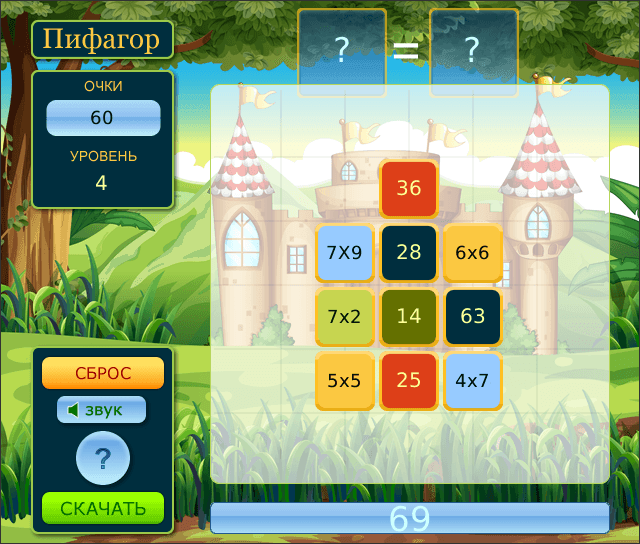
Light blue and dark blue are paired colors
If you choose a blue chip with a 4x7, the choice of paired chips is reduced to dark blue ones. At this point in the game it's 28 and 63. If you've forgotten the exact product of 4 and 7, you can randomly poke one of these dark blue tiles (very dark, actually). Not a bad strategy for those who don't like math.
So, along the way, in addition to the multiplication tables, you can train your attention and eye.
I see chips with the same numbers! Is this a bug?
This is a consequence of the fact that many products in the multiplication table are repeated. For example, 36 can be formed as 9x4. Or like 6x6.
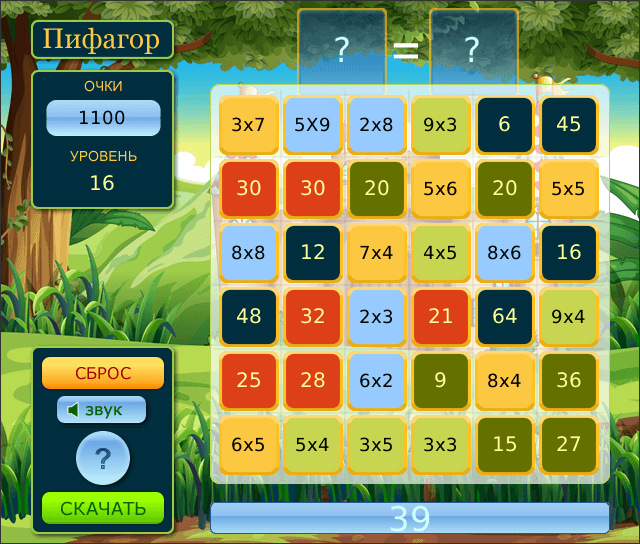
Two red thirty at the top is not a bug,
and the results for 5x6 and 6x5, which fell in the same series
You can remove chips from the same numbers like couples. But remember - after this you will have to find their factors. And comparing different multipliers is much more difficult.
For hosting the game on your hosting, providing all the necessary technical conditions for this, as well as for the announcement on the main page, thanks to which this test game could be seen by many people who urgently needed to test their knowledge in mathematics :). You can thank him too by looking at his sections dedicated to
and any other pages you find interesting.
Using the game
If you were able to download the swf file, you can freely use it on your personal computer for educational or other purposes.
Author of the program
The game "Pythagoras" was developed by Sergey Tokarev to train programming skills. You can contact him, leave feedback on the program and comments on errors here.



